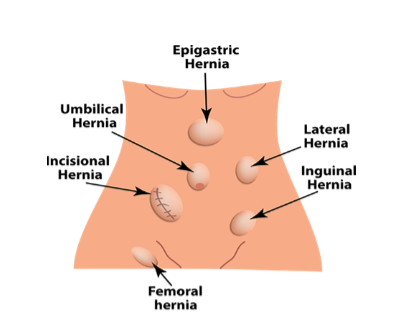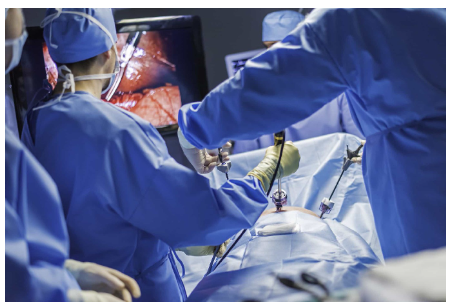BEST LAPAROSCOPIC HERNIA SURGEON IN CHENNAI
DR KUMAR | BILLROTH HOPITALS
WHY CHOOSE DR. KUMAR FOR HERNIA SURGERY IN CHENNAI?
1. 29+ Years of Experience in treating simple, recurrent, and complex Hernias Laparoscopically
2. Specialist in Laparoscopic & Minimally Invasive Surgery – ensuring minimal scars, less pain, and faster recovery
3. Advanced Technology & Modern Technique
TYPES OF HERNIAS TREATED LAPAROSCOPICALLY BY DR KUMAR

* Inguinal Hernia – most common type, expertly managed with advanced
laparoscopic repair
* Umbilical Hernia – safe and effective treatment, even in complex cases
* Incisional Hernia – specialized care for recurrent and post-surgical
hernias
* Hiatal & Complex Hernias – precise repair with modern minimally
invasive techniques
* Recurrent Hernias
ADVANTAGES OF LAPAROSCOPIC HERNIA SURGERY AT BILLROTH HOSPITAL
1. Smaller incisions, minimal pain, and reduced scarring
2. Shorter hospital stay and quicker return to daily activities
3. Lower risk of infection and recurrence
4. Enhanced precision with modern laparoscopic equipment
DR KUMAR’S PATIENT- CENTRIC APPROACH
Dr Kumar believes every patient deserves personalized care and clarity before surgery. From diagnosis to recovery, his team ensures:
* Transparent consultation
* Individualized treatment plans
* Dedicated pre- and post-surgical support

KEY TECHNIQUES USED BY DR KUMAR
Dr Kumar specializes in multiple Laparoscopic approaches tailored to the type
of Hernia, its location, size, recurrence status and the patient’s overall Health.
Here’s an overview of the main Laparoscopic techniques he performs:
1.TEP-TOTALLY EXTRAPERITONEAL REPAIR
Best for Inguinal and Femoral Hernia
This techniques avoids entering the abdominal cavity
The Hernia is accessed and repaired in the pre-peritoneal space
A synthetic Mesh is placed behind the abdominal muscles to reinforce the wall.
ADVANTAGES:
- Lower risk of complications involving abdominal organs
- Less postoperative pain
- Suitable for patients with previous abdominal surgeries
2.TAPP – TRANSABDOMINAL PREPERITONEAL REPAIR
Best for: Bilateral or recurrent inguinal hernias
The surgeon enters the peritoneal cavity and then creates a space behind the
abdominal wall to place the mesh.
Allows direct visualization of both groin areas, making it ideal for treating
bilateral hernias in one go.
ADVANTAGES:
- Excellent view of the anatomy
- Treats multiple or recurrent hernias
- Can identify other undiagnosed hernias during surgery
3.IPOM – INTRAPERITONEAL ONLAY MESH REPAIR
Best for: Ventral, umbilical, incisional, and complex abdominal wall hernias
Mesh is placed inside the peritoneal cavity, directly over the hernia defect.
Secured with tacks or sutures
Often used in large or multiple hernia defects, or where other techniques aren’t
feasible.
ADVANTAGES:
- Minimally invasive even for complex cases
- Can be performed safely under general or spinal anaesthesia
- Lower infection risk compared to open mesh placement
4.ETEP – ENHANCED VIEW TOTALLY EXTRAPERITONEAL
REPAIR
Best for: Large midline hernias, recurrent incisional hernias, and high BMI
patients
A newer, advanced variant of TEP with improved visualization and space
Allows component separation and better mesh positioning, without entering the
peritoneal cavity
ADVANTAGES:
- Reduces recurrence in complex or previously failed repairs
- Less pain and faster healing compared to open complex surgeries
- Better cosmetic outcome
5.HYBRID APPROACH (LAPAROSCOPIC + MINI-OPEN)
Best for: Very large hernias, complex recurrent hernias, Swiss cheese-type
hernias
Combines benefits of laparoscopy and open repair
Hernia is reduced Laparoscopically, and mesh is placed through a small incision
for better coverage.
ADVANTAGES:
- Flexible technique for challenging cases
- Strong mesh fixation with minimal tissue trauma
- Especially helpful in obese or elderly patients
6. MESHLESS LAPAROSCOPIC REPAIR (SELECTIVE CASES)
Best for: Young patients, athletes, or those with mesh-related concerns
Uses tissue-based repair techniques without mesh, such as suture repair
Suitable only for very small hernias or in patients with strong natural tissue
support
ADVANTAGES:
- No foreign material inside the body
- Reduced risk of chronic mesh-related complications
- Preserves future surgical options
HOW DR. KUMAR SELECTS THE RIGHT TECHNIQUE?
Every patient is unique. Dr Kumar carefully evaluates:
Type and size of hernia
Previous surgeries or recurrences
Lifestyle (e.g., athletic demands, manual labor, obesity)
Overall health conditions (cardiac, diabetic, etc.)
Risk of complications and patient preferences
Using advanced imaging (ultrasound, CT, MRI) and his decades of experience, he personalizes the technique for optimal surgical outcome and long-term comfort.
WHAT TO EXPECT: THE PATIENT EXPERIENCE
Preoperative Consultation
Personalized evaluation to determine the optimal surgical plan Discussion of laparoscopy vs. open surgery, anesthesia options, and expected recovery timelines
Day of Surgery
Typically performed under general anesthesia
Multi-port access established with precision instruments inserted via small
incisions
Hernia content repositioned and the defect reinforced with mesh or sutures
Incisions closed carefully to minimize tissue disruption
Recovery
Most patients enjoy short hospital stays and return to normal activities rapidly
Postoperative pain is minimized and risk of infection is low
Patients are encouraged to avoid heavy lifting, prevent constipation, and follow
breathing exercises to ensure smooth recovery
STATE‑OF‑THE‑ART FACILITY: BILLROTH HOSPITAL
Dr Kumar performs surgeries at Billroth Hospitals, a multi-specialty, 600-bed facility offering:
Emergency services, advanced diagnostics (CT, MRI, endoscopy), ICU, CCU, and 24/7 specialist availability
One of the first hospitals in Chennai to adopt laparoscopic and laser surgery techniques, boasting advanced operating theatre infrastructure and high-end laparoscopy units
Full spectrum of support—anaesthetists, intensivists, senior surgeons, imaging,and lab facilities all under one roof, ensuring safe management of even high-risk patients
Additionally, Dr Kumar offers hernia surgery under local anaesthesia for select
high-risk patients, such as those with cardiac conditions or reduced ejection
fraction, with excellent outcomes.
ADVANCED FACILITIES FOR ADVANCED TECHNIQUES
All procedures are performed at Billroth Hospitals, Chennai, using:
1. High-definition laparoscopic equipment
2. 3D visualization systems for complex reconstructions
3. ICU and emergency care backup for high-risk patients
4. Availability of both general and spinal anaesthesia options
WHY LAPAROSCOPIC HERNIA REPAIR WITH DR. KUMAR?
* Small incisions
* Minimal scarring and faster recovery
* Mesh or meshless options
* Expert Laparoscopic surgeon
* 20,000+ surgeries; MRCS-certified
* Customized to patient needs
* Advanced techniques
* Handles even the most complex or recurrent hernias Laparoscopically.
FAQ’S
What anaesthesia is used during Laparoscopic Hernia Surgery?
Yes, laparoscopic hernia repair is usually done under general anaesthesia.
Will mesh be used in my surgery?
Yes, in most cases a mesh is used to strengthen the weak area and reduce recurrence risk.
How is it different from open hernia surgery?
Laparoscopic: Smaller cuts, less pain, quicker recovery, faster return to work.
Open: Larger incision, slightly longer recovery, may be better for very large or
complicated hernias.
Will I have visible scars?
Scars are minimal—usually 3-4 very small marks that fade over time.
